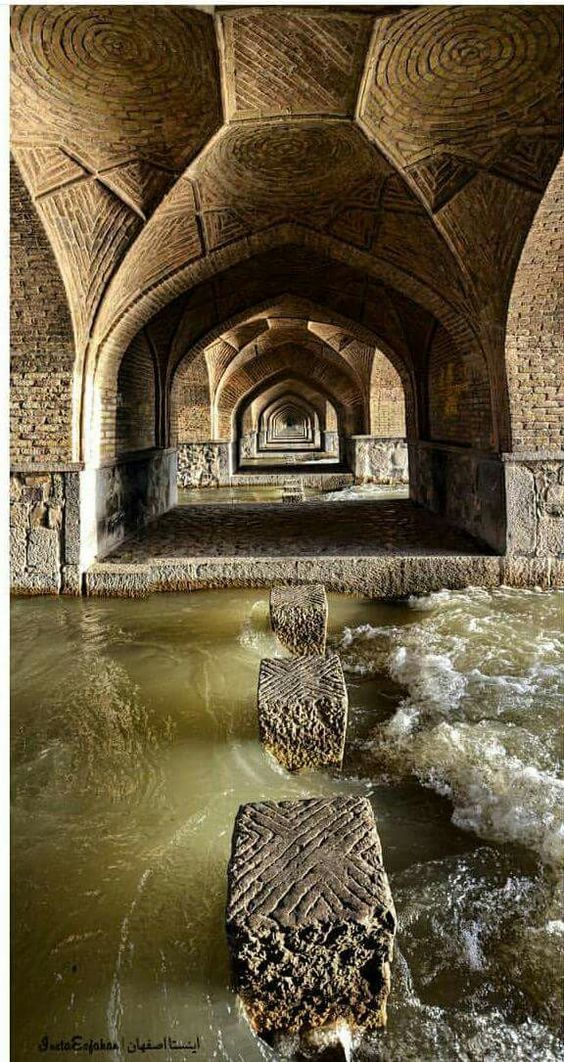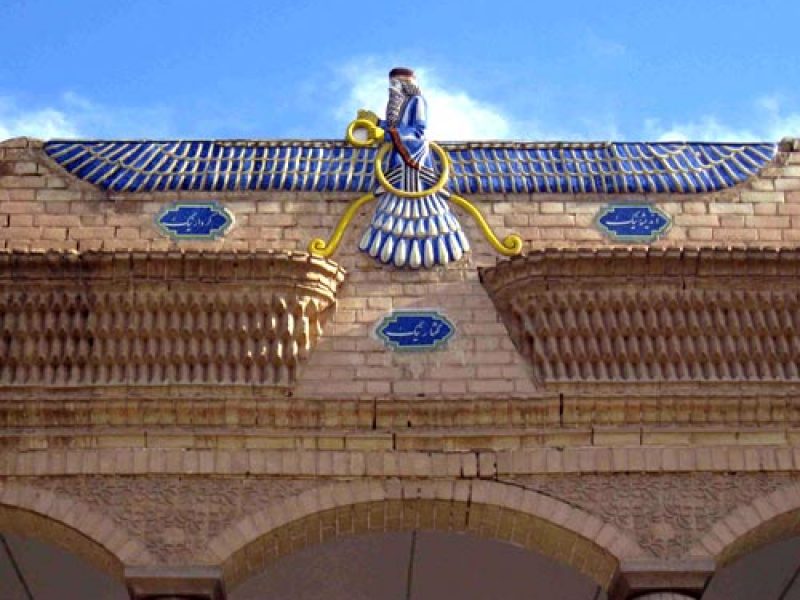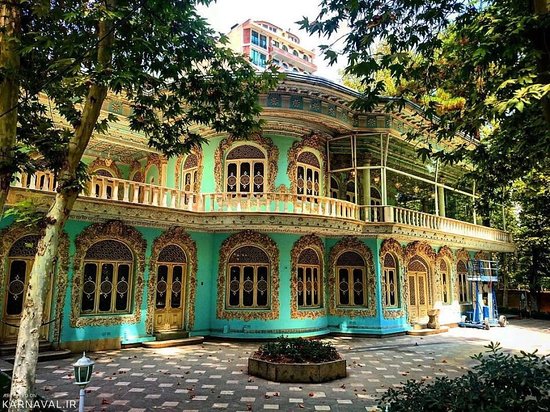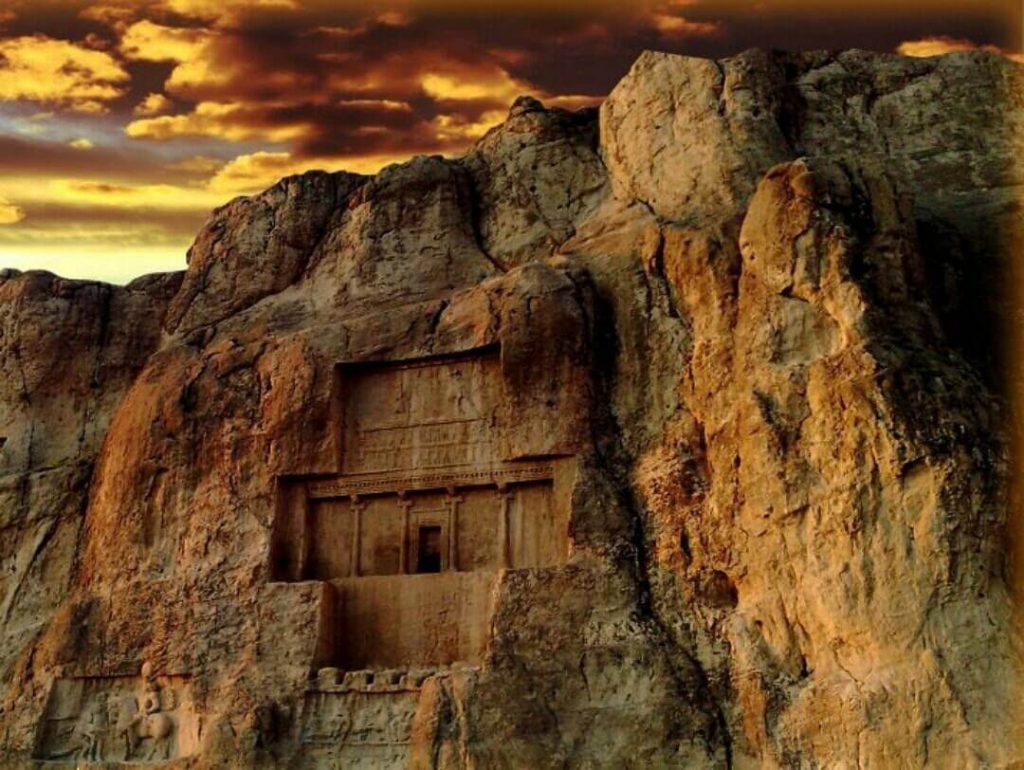
About Isfahan
Isfahan is a beautiful city located in central Iran, and it is a popular destination for tourists due to its rich history, stunning architecture, and vibrant culture. Here's a brief travel guide to help you plan your visit to Isfahan:
Isfahan travel guide
Isfahan is a beautiful city located in central Iran, and it is a popular destination for tourists due to its rich history, stunning architecture, and vibrant culture. Here’s a brief travel guide to help you plan your visit to Isfahan:
Visit Naqsh-e Jahan Square: This UNESCO World Heritage site is a must-visit destination in Isfahan. It is one of the largest squares in the world, and it is surrounded by stunning architecture, including the Ali Qapu Palace, Sheikh Lotfollah Mosque, and the Imam Mosque.
Explore the Jameh Mosque of Isfahan: This mosque is one of the oldest and largest mosques in Iran, and it is also a UNESCO World Heritage site. It features stunning tile work, intricate calligraphy, and beautiful architecture.
Visit the Chehel Sotoun Palace: This palace was built during the Safavid era, and it features stunning frescoes, intricate mirror work, and beautiful gardens.
Stroll along the Zayanderud River: This river runs through the heart of Isfahan, and it is a beautiful spot for a leisurely stroll. You can also visit the historic bridges that cross the river, including Si-o-se Pol and Khaju Bridge.
Explore the Vank Cathedral: This Armenian cathedral is located in the Jolfa neighborhood of Isfahan, and it features stunning frescoes, intricate carvings, and beautiful tile work.
Try the local cuisine: Isfahan is known for its delicious cuisine, which includes dishes like Biryani, Qorme Sabzi, and Fesenjan. Be sure to visit local restaurants and food stalls to try these dishes and other Iranian specialties.
Visit local bazaars: Isfahan has several historic bazaars where you can find traditional handicrafts, textiles, spices, and other local products. Some of the most popular bazaars include the Grand Bazaar, Qeysarieh Bazaar, and Najvan Bazaar.
Attend cultural events: Isfahan has a vibrant cultural scene, and there are often events and festivals happening throughout the year, including music concerts, theater performances, and art exhibitions.
Visit nearby attractions: If you have time, consider visiting nearby attractions like the Abyaneh village, Kashan, or the Varzaneh desert.
Isfahan is a beautiful city with a rich cultural heritage, and there are plenty of things to see and do during your visit. Be sure to plan your trip in advance and allow plenty of time to explore everything this amazing city has to offer!
Why visit Isfahan
There are many reasons to visit Isfahan. Here are a few:
Stunning architecture: Isfahan is known for its stunning architecture, which includes many historic buildings, mosques, palaces, and bridges. The city’s architecture is a mix of Islamic, Persian, and Central Asian styles, and it is often adorned with intricate tile work, calligraphy, and frescoes.
Rich cultural heritage: Isfahan has a rich cultural heritage that dates back thousands of years. The city has been a center of art, literature, and science for centuries, and it has played an important role in Iranian history.
Delicious cuisine: Isfahan is known for its delicious cuisine, which includes a variety of Iranian specialties. The city’s food is often made with fresh ingredients and spices, and it is a highlight of any visit to Isfahan.
Beautiful parks and gardens: Isfahan has several beautiful parks and gardens, including the famous Bagh-e Fin Garden and the Hasht Behesht Garden. These green spaces offer a peaceful respite from the hustle and bustle of the city.
Friendly locals: Iranians are known for their hospitality and warmth, and this is especially true in Isfahan. Visitors to the city are often greeted with a friendly smile and a warm welcome.
Vibrant cultural scene: Isfahan has a vibrant cultural scene, with many events and festivals happening throughout the year. Visitors can attend music concerts, theater performances, and art exhibitions.
Overall, Isfahan is a fascinating and beautiful city with a rich cultural heritage, stunning architecture, delicious cuisine, and friendly locals. It is a must-visit destination for anyone traveling to Iran.
People culture in isfahan
Isfahan is a city with a rich cultural heritage, and its people are known for their hospitality, warmth, and love for art and poetry. The people of Isfahan are proud of their city’s history and heritage, and they are happy to share it with visitors.
The people of Isfahan are predominantly Persian, and they speak Farsi as their primary language. Like many other cities in Iran, Isfahan has a strong Islamic culture, and religion plays an important role in people’s lives. However, the city is also known for its tolerance and respect for other cultures and religions.
One of the most notable aspects of Isfahan’s culture is its love for art and architecture. The city is home to many historic buildings, mosques, and palaces that showcase the city’s stunning architecture and intricate tile work. The people of Isfahan take great pride in their city’s beauty and history, and they are often involved in preserving and promoting it.
Music and poetry are also important parts of Isfahan’s culture. The city has a rich tradition of classical Persian music, and many famous musicians and poets hail from Isfahan. Visitors to the city can often hear live music performances or attend poetry readings.
Finally, hospitality is a cornerstone of Isfahan’s culture. Visitors to the city are often greeted with a warm welcome and offered tea and sweets. The people of Isfahan are known for their generosity and kindness, and they are happy to help visitors in any way they can.
Overall, the people of Isfahan are proud of their city’s rich cultural heritage and are happy to share it with visitors. Their warmth, hospitality, and love for art and poetry make Isfahan a fascinating and welcoming destination.
History of Isfahan
Isfahan has a long and rich history that dates back thousands of years. The city was originally founded by the Achaemenid Empire in the 6th century BCE and was known as Aspadana. The city was later conquered by Alexander the Great in 330 BCE and became a part of the Seleucid Empire.
In the centuries that followed, Isfahan was ruled by various empires and dynasties, including the Parthians, Sassanids, and the Islamic Caliphate. It was during the Islamic period that Isfahan became an important cultural and intellectual center, with many scholars and artists calling the city home.
In the 11th century, Isfahan was conquered by the Seljuk Turks, who made it the capital of their empire. During this period, many of the city’s famous mosques and palaces were built, including the Jameh Mosque, which is one of the oldest and largest mosques in Iran.
In the 16th century, Isfahan became the capital of the Safavid Empire, which was one of the most powerful empires in the Islamic world at the time. Under the Safavids, Isfahan experienced a cultural and architectural renaissance, with many of the city’s most famous buildings, such as the Imam Mosque and the Chehel Sotoun Palace, being built during this period.
Isfahan continued to flourish under the Qajar dynasty in the 19th century, and it became a center of trade and commerce. In the 20th century, Isfahan played an important role in the Iranian Revolution of 1979, and it was a center of resistance against the regime of the Shah.
Today, Isfahan is one of the most important cities in Iran, and it is known for its rich cultural heritage, stunning architecture, and friendly people. It is a must-visit destination for anyone interested in Iranian history and culture.
More detail
Isfahan is located in central Iran, and its strategic location on the ancient trade routes made it a hub of commerce and culture throughout history. Its fertile land and the nearby Zayandeh River also contributed to its importance.
The Achaemenid Empire founded Isfahan in the 6th century BCE, and it served as a provincial capital during the empire’s reign. It later became a part of the Seleucid Empire after Alexander the Great conquered Persia.
In the centuries that followed, Isfahan was ruled by various empires and dynasties, including the Parthians, Sassanids, and the Islamic Caliphate. During the Islamic period, Isfahan became a center of art, science, and literature, and many scholars and artists from around the Islamic world were drawn to the city.
The Seljuk Turks conquered Isfahan in the 11th century, and they made it the capital of their empire. During this period, many of the city’s famous mosques and palaces were built, including the Jameh Mosque, which is one of the oldest and largest mosques in Iran.
In the 16th century, Isfahan became the capital of the Safavid Empire, which was one of the most powerful empires in the Islamic world at the time. It was during this period that Isfahan experienced a cultural and architectural renaissance. Many of the city’s most famous buildings, such as the Imam Mosque, the Chehel Sotoun Palace, and the Ali Qapu Palace, were built during this time.
In the 18th and 19th centuries, Isfahan was ruled by the Qajar dynasty. During this period, Isfahan continued to be a center of trade and commerce, and it played an important role in the economic development of Iran.
In the 20th century, Isfahan played an important role in the Iranian Revolution of 1979. The city was a center of resistance against the regime of the Shah, and it played an important role in the establishment of the Islamic Republic of Iran.
Today, Isfahan is one of the most important cities in Iran, and it is known for its rich cultural heritage, stunning architecture, and friendly people. It is a popular destination for tourists and scholars interested in Iranian history and culture.
Traditional food of Isfahan
Isfahan has a rich culinary tradition that is influenced by the city’s history and geography. Some of the traditional foods of Isfahan include:
Biryani: A flavorful rice dish that is made with meat, vegetables, and spices such as saffron and cinnamon.
Gaz: A sweet and chewy candy made from pistachios and honey that is popular throughout Iran.
Gheymeh: A stew made with beef or lamb, split peas, tomatoes, and spices. It is often served with rice.
Zereshk Polo: A rice dish made with barberry, saffron, and chicken. It is a popular dish for special occasions such as weddings and holidays.
Fesenjan: A thick and flavorful stew made with pomegranate paste, ground walnuts, and chicken or duck.
Khoresht-e Mast: A yogurt-based stew made with beef or lamb, eggplant, and spices such as saffron and turmeric.
Ashe Reshteh: A hearty soup made with beans, noodles, and herbs such as parsley and cilantro.
Samosas: A savory pastry filled with meat, vegetables, and spices. It is similar to the Indian samosa.
These are just a few of the traditional foods of Isfahan. The city has a rich culinary tradition that is influenced by the diverse cultures and cuisines of Iran.
The weather of Isfahan
Isfahan has a dry, arid climate with hot summers and cold winters. The city is located in a desert region, so it receives very little rainfall throughout the year.
The summer months in Isfahan, from June to August, are very hot with average high temperatures ranging from 35-38°C (95-100°F) and low temperatures around 20-25°C (68-77°F). The heat can be oppressive, especially during the midday hours, so it’s important to stay hydrated and take breaks in shaded areas.
The winter months, from December to February, are cold with average high temperatures ranging from 8-12°C (46-54°F) and low temperatures around -6 to 0°C (21-32°F). The nights can be particularly cold, so warm clothing is necessary.
The best time to visit Isfahan is during the spring (March to May) and fall (September to November) when the weather is mild and pleasant. During these months, the average temperatures range from 18-25°C (64-77°F) during the day and 8-15°C (46-59°F) at night.
Overall, Isfahan has a harsh climate with extreme temperatures during the summer and winter months. Visitors should be prepared for the weather conditions and take appropriate measures to stay comfortable.
Travel attractions in Isfahan
Isfahan is a city of rich cultural heritage and stunning architecture, with many attractions to offer visitors. Some of the top travel attractions in Isfahan include:
Naqsh-e Jahan Square: Also known as Imam Square, this is one of the largest public squares in the world and a UNESCO World Heritage Site. It features the Imam Mosque, Sheikh Lotfollah Mosque, Ali Qapu Palace, and Qeysarieh Bazaar.
Imam Mosque: Also known as the Shah Mosque, this stunning mosque is located on the south side of Naqsh-e Jahan Square. It features intricate tile work, calligraphy, and an impressive dome.
Sheikh Lotfollah Mosque: This mosque is located on the east side of Naqsh-e Jahan Square and is known for its beautiful tile work and dome.
Chehel Sotoun Palace: This palace was built in the 17th century and features beautiful gardens and a hall with 20 wooden columns.
Hasht Behesht Palace: This palace is located in a beautiful garden and features intricate tile work and frescoes.
Vank Cathedral: This Armenian Orthodox cathedral is located in the Jolfa district and features beautiful frescoes and tile work.
Si-o-se-pol Bridge: Also known as the Bridge of 33 Arches, this historic bridge spans the Zayandeh River and is a popular spot for picnics and sunset views.
Jameh Mosque: This mosque is one of the oldest and largest mosques in Iran, with elements of architecture from different eras of Iranian history.
Aali Qapu Palace: This palace was built in the 17th century and features beautiful tile work, calligraphy, and a music room with incredible acoustics.
Bazaar-e Bozorg: This traditional market is a great place to shop for souvenirs and local crafts, as well as to experience the vibrant atmosphere of Isfahan.
These are just a few of the many travel attractions in Isfahan. The city has a rich cultural heritage and a wealth of beautiful sights to explore.
More places
Menar Jonban: A historical monument that includes a mosque and two minarets. The unique feature of this site is that if one minaret is shaken, the other minaret shakes in a synchronous manner.
Monar-e Jonban: A historic monument that has been designed with a beautiful engineering pattern that creates the illusion of the structure moving in waves.
Jameh Mosque of Isfahan: A UNESCO World Heritage Site, this mosque is known for its beautiful architecture that includes different Islamic styles.
Atashgah: A Zoroastrian fire temple which has now been converted into a museum showcasing the history and culture of Zoroastrianism.
Zayanderud River: The largest river in the central plateau of Iran, the Zayanderud River is a beautiful spot to take a stroll, go for a boat ride, or have a picnic.
Khaju Bridge: A historic bridge that was built in the 17th century, Khaju Bridge is a great spot to watch the sunset and take in the beautiful views of Isfahan.
Soffeh Mountain: A beautiful mountain located on the south side of the city, Soffeh Mountain offers hiking trails and beautiful views of the city.
Ali Gholi Agha Complex: A historic complex that includes a mosque, a bathhouse, and a bazaar.
Isfahan Music Museum: A museum dedicated to traditional Iranian music and instruments, with interactive exhibits and live performances.
Pigeon Towers: These historic towers were used to house pigeons, which were then used for their droppings for fertilizing fields.
These are just a few more places to explore in Isfahan. The city has a rich history and cultural heritage, with many interesting sights to see and experiences to be had.
Famous restaurant in Isfahan
Isfahan is known for its delicious traditional Iranian cuisine, and there are many great restaurants in the city that offer a taste of local dishes. Here are some of the most famous restaurants in Isfahan:
Sofreh Khaneh Shahrzad: This restaurant is known for its traditional Iranian dishes, including kebabs, stews, and rice dishes. It also has a beautiful interior decorated with traditional Iranian art.
Azadegan Cafe-Restaurant: This restaurant is famous for its delicious breakfast dishes, including a traditional Iranian breakfast platter that includes a variety of bread, cheese, and other accompaniments.
Khatoon Restaurant: This restaurant is known for its beautiful outdoor seating area and traditional Iranian dishes, including kebabs and stews.
Shahrzad Restaurant: This restaurant is known for its elegant atmosphere and traditional Iranian dishes, including lamb shank and fesenjan.
Sharbat Khaneh: This restaurant is known for its traditional Iranian drinks, including different types of sharbat (sweet fruit syrup drinks) and traditional Iranian tea.
Malek Soltan Jarchi Bashi: This restaurant is known for its delicious traditional Iranian sweets, including baklava and other pastries.
Jolfa Tourist Hotel Restaurant: This restaurant is located in the Jolfa neighborhood and offers traditional Iranian dishes as well as international cuisine.
These are just a few of the many famous restaurants in Isfahan. The city has a rich culinary culture, and visitors are sure to find many great dining options while exploring the city.
Nightlife in Isfahan
Isfahan is known for its rich cultural and historical heritage, and while it may not have a thriving nightlife scene like some other cities, there are still some fun activities to do after dark. Here are some ideas for nightlife in Isfahan:
Naqsh-e Jahan Square: This beautiful square is a popular spot for locals and tourists alike, especially at night when it is illuminated and buzzing with activity.
Traditional tea houses: Isfahan has many traditional tea houses that are open late into the night, offering a cozy atmosphere to relax and socialize with friends over a cup of tea or coffee.
Music and dance performances: Isfahan has a rich cultural heritage, and there are often music and dance performances held in various venues throughout the city. These performances can be a great way to experience local culture and enjoy a night out.
Riverboat tour: Take a night-time riverboat tour along the Zayanderud River, which offers beautiful views of the city at night.
Night bazaar: Isfahan’s bazaars are lively and bustling during the day, but some of them also stay open late into the night. Explore the shops and stalls selling local handicrafts and souvenirs while enjoying the cooler evening temperatures.
Rooftop cafes and restaurants: Many of Isfahan’s cafes and restaurants have rooftop seating areas that offer beautiful views of the city at night. Enjoy a meal or drink while taking in the stunning scenery.
These are just a few ideas for nightlife in Isfahan. While the city may not have a traditional party scene, there are still plenty of activities to enjoy after dark.
At the end
I hope this travel guide to Isfahan has been helpful and informative. Isfahan is a beautiful and historic city that is well worth a visit, with its stunning architecture, rich culture and traditions, delicious cuisine, and welcoming people. Whether you are interested in exploring the city’s many attractions, trying local foods, or simply soaking up the atmosphere, Isfahan has something to offer everyone. Safe travels!

I had a wonderful time! I love mountains. I had very much time spent on preparing to my first mountain climb. I loved how trainers and instructors helped me and the other guys from my group. There were neither difficulties nor problems. I got memorable impressions and I will come back!

I’m an experienced climber and I went to an expedition with my friends. I loved friendly atmosphere and professional attitude of our instructors. We climbed the mountain effortlessly and everybody were happy! This sport is for adventurous and brave people. Thanks for awesome time!



